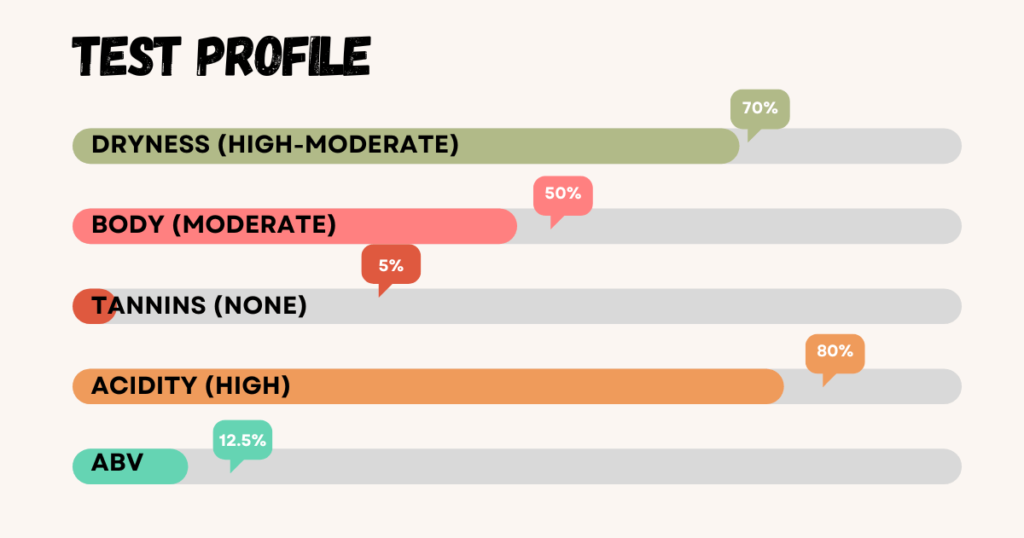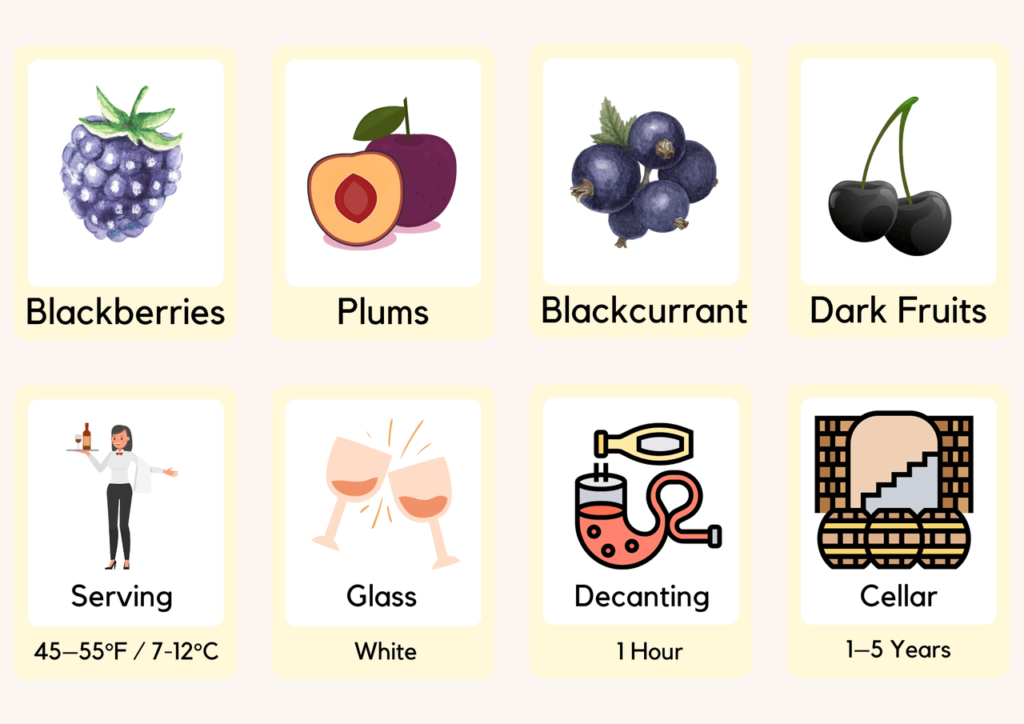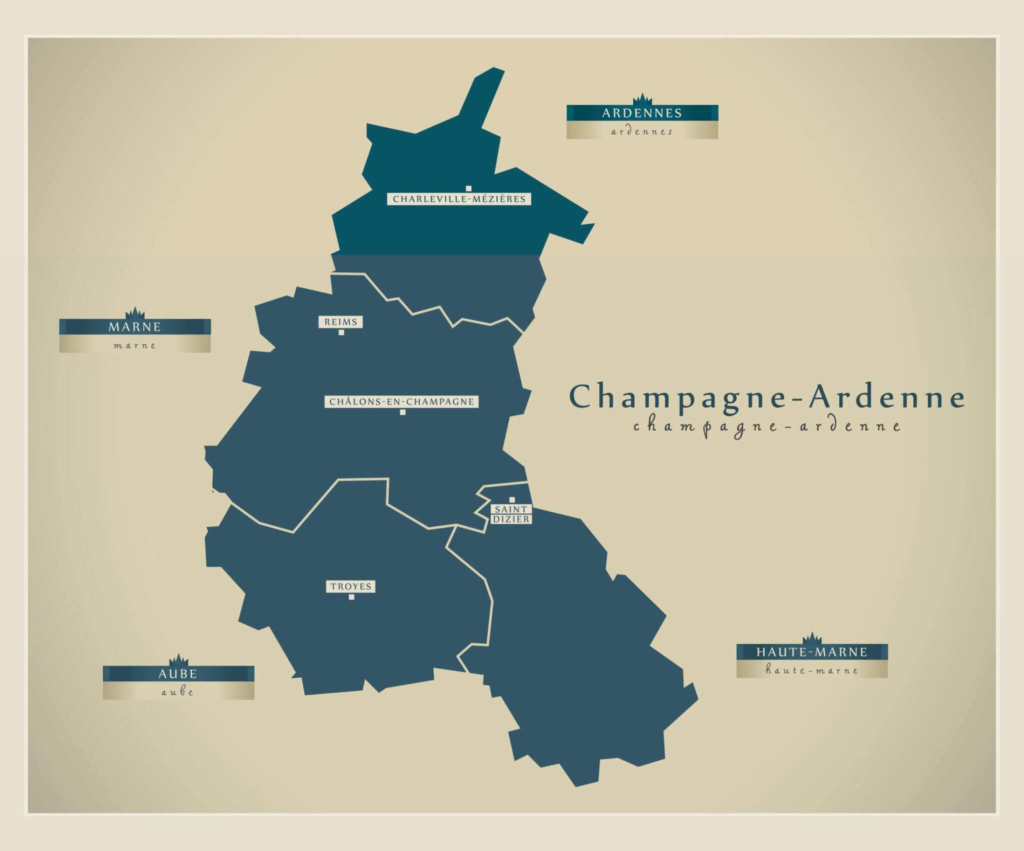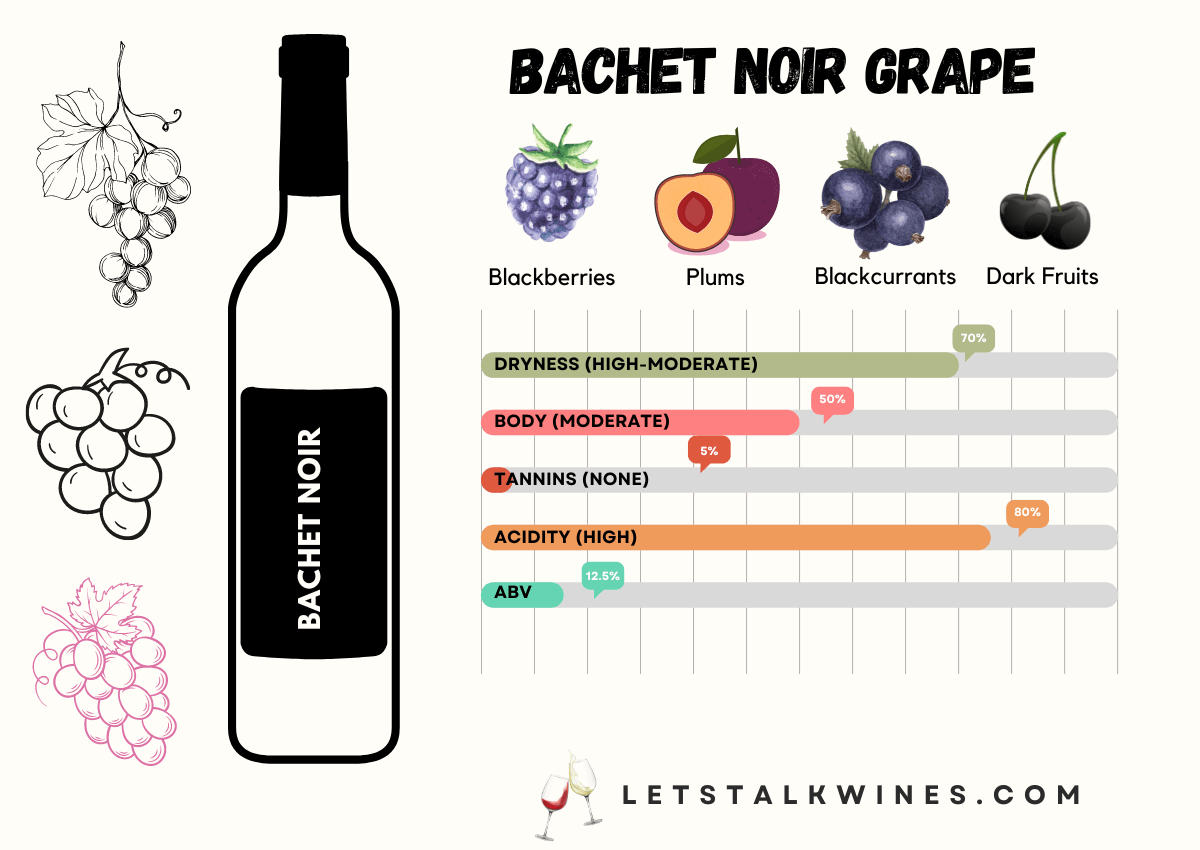Let’s raise a glass to Bachet noir, a French red grape variety that’s as rare as it is intriguing. Often overshadowed by its superstar sibling, Chardonnay, Bachet noir holds its own with a unique character and intriguing history. Think of it as the “wild child” of the Pinot family, adding depth and color to the Gamay wines of the Aube region.
How to Pronounce Bachet noir
Ba-shay nwar
- Ba: pronounced like the “ba” in “bad”
- shay: pronounced like the “sh” in “shirt”
- nwar: pronounced like the “nwar” in “noir” (French for “black”)
Origin and Viticulture:
Imagine a love story between two iconic grapes: the elegant Pinot Noir and the earthy Gouais blanc (also Chardonnay’s parent). In the ancient French region of Aube, centuries ago, their unlikely union birthed Noir. This noble lineage whispers in its vibrant aromas and complex flavors, while the Gouais blanc influence adds a touch of rustic charm, making it stand out from the crowd.
Taming Bachet Noir is no easy feat. Its low vigor and bushy growth require careful pruning for optimal sunlight and airflow. Small berries, though concentrated in flavor, limit yields, and late ripening, often in November, adds to the challenge. But like a hidden gem, the rewards are worth it.


Historical Whispers:
While not always explicitly mentioned, Bachet Noir’s influence whispers through time. Documents from the 19th century reveal its use in Aube for both wine and table grapes. Hints of its potential for sparkling wines, though yet untapped in Champagne production, add an intriguing chapter to its story.
A Hidden Star in Wine Regions:
Today, Bachet Noir shines brightest in the Aube, where it adds depth and complexity to Gamay-based rosés and lighter-bodied red wines. Imagine vibrant raspberry and violet aromas mingling with earthy blackberry and spice notes, a touch of tannin, and lively acidity dancing on your palate. That’s the magic of Bachet Noir!
Domaine Pierre Labet and Domaine Jacques Lallemand are renowned producers showcasing the true potential of this grape. But be warned, its rarity makes it a treasure hunt. You might encounter it occasionally in blends outside Aube, but finding a single-varietal Noir is like unearthing a hidden gem.
From Vine to Divine: Unveiling the Magic of Bachet Noir Winemaking
Bachet Noir, the enigmatic grape of Aube, isn’t just a pretty face in the vineyard. Once it enters the winery, its true magic unfolds, transforming into stunning expressions of red wine. So, let’s dive into the captivating world of Bachet Noir winemaking, uncovering its traditional methods, regional roles, and fascinating family ties.
A Blend Master:
Bachet Noir rarely hogs the spotlight. Its low yields and vibrant acidity make it a master of the supporting role, adding complexity and depth to lighter-bodied red wines, particularly those crafted from Gamay in its home region of Aube. Imagine delicate Gamay fruitiness infused with Bachet Noir’s earthy elegance and lively acidity – a true symphony of flavor in every sip.
Whispers of Tradition:
Traditionally, Bachet Noir sees minimal intervention in the winery. Grapes are gently destemmed and undergo cool maceration to retain its fresh, expressive notes. Fermentation often happens using native yeasts, capturing the unique terroir of the Aube vineyards. The resulting wines are typically aged in neutral vessels like stainless steel or older oak, allowing the grape’s intrinsic character to shine through.
Beyond Aube’s Heart:
While Aube is Bachet Noir’s heartland, its versatility allows it to venture beyond. In the Loire Valley, it occasionally adds a touch of rustic charm to Gamay blends. It might even peek into a glass of Rosé de Loire, adding a hint of earthy intrigue to this classic pink wine. Remember, though, spotting a solo Noir is like finding a four-leaf clover – a rare treat for adventurous wine lovers.

Family Matters: Pinot Noir’s Rustic Cousin:
DNA analysis has revealed This Noir’s intriguing lineage: a love child of the elegant Pinot Noir and the earthy Gouais blanc. This heritage explains its vibrant fruitiness reminiscent of Pinot Noir, laced with the rustic charm inherited from Gouais blanc. It’s like a Pinot Noir that took a vacation in the French countryside, returning with a touch of earthy wisdom.
A Scientific Spark:
Bachet Noir is more than just a delicious grape; it’s a scientific puzzle waiting to be solved. DNA research continues to unravel its unique genetic makeup, offering insights into its parentage and potential. This ongoing scientific exploration opens doors for future experiments, possibly bringing solo Bachet Noir bottlings closer to reality.
Bachet Noir in the Winemaking Game:
Blended Beauty: Bachet Noir rarely takes center stage solo. Its low yields and vibrant acidity make it a master of the supporting role, adding complexity and depth to lighter-bodied red wines, particularly Gamay blends in its Aube home. Imagine a dance of flavors: delicate Gamay fruitiness twirling with Bachet Noir’s earthy elegance and lively acidity – a true symphony in every sip.
Traditional Whispers: Minimal intervention is the name of the game for Bachet Noir. Gentle destemming, cool maceration to preserve fresh notes, and fermentation with native yeasts capture the unique terroir of the Aube vineyards. The resulting wines typically age in neutral vessels like stainless steel or older oak, allowing the grape’s intrinsic character to shine through.
Beyond Aube’s Borders: While Aube is Bachet Noir’s heartland, its versatility takes it to other regions. In the Loire Valley, it occasionally adds a rustic charm to Gamay blends or whispers intrigue into Rosé de Loire. But remember, spotting a solo Bachet Noir is like finding a four-leaf clover – a rare treat for adventurous wine lovers.
Bachet Noir’s Grapevine Genealogy:
Pinot Noir’s Earthy Cousin: DNA analysis reveals Bachet Noir’s intriguing lineage: a love child of the elegant Pinot Noir and the earthy Gouais blanc (Chardonnay’s ancestor). This heritage explains its vibrant fruitiness reminiscent of Pinot Noir, laced with the rustic charm inherited from Gouais blanc. Think of it as a Pinot Noir that took a vacation in the French countryside, returning with a touch of earthy wisdom.
Sibling Rivalry with Gamay Noir: Both share Pinot Noir as their father, but their mothers tell a different story. Bachet Noir inherits earthiness from Gouais blanc, while Gamay Noir’s mother, Teinturier, whispers vibrant fruitiness. This creates a fascinating dynamic in Aube, where Bachet Noir adds depth and complexity to Gamay’s playful fruitiness.
Whispers of Chardonnay: Through Gouais blanc, Noir shares a distant cousinhood with Chardonnay. This adds a touch of unexpected elegance, with subtle floral notes and hints of minerality woven into its complex tapestry.
Scientific Scrutiny:
DNA Puzzle Unlocked: Research continues to unravel the Noir’s unique genetic makeup, offering insights into its parentage and potential. This ongoing exploration opens doors for future experiments, possibly bringing single-varietal Noir bottlings closer to reality.
A Grape of Intrigue: Beyond deliciousness, Noir is a scientific puzzle waiting to be solved. Its unusual characteristics and ancestry pique the curiosity of researchers, paving the way for exciting discoveries in the world of grape genetics and viticulture.
Top Facts and Stats:
Origin and Lineage:
- French Grape: Born in the Aube region of France, centuries ago.
- Love Child of Royalty: A natural cross between Pinot Noir and Gouais blanc (Chardonnay’s ancestor).
- Rare Gem: Makes up only 0.02% of all grape varieties planted in France.
Viticulture and Growth:
- Low Vigor: Requires careful pruning and attention to ensure optimal sunlight and airflow.
- Small Berries: Concentrated flavor, but limited yields.
- Late Ripening: Often into November, adding a touch of challenge.
Winemaking and Flavor:
- Master of Blends: Adds complexity and depth to lighter-bodied red wines, especially Gamay blends.
- Minimal Intervention: Traditional methods favor gentle destemming, cool maceration, and native yeast fermentation.
- Earthy Elegance: Vibrant fruitiness reminiscent of Pinot Noir, interwoven with rustic charm inherited from Gouais blanc.
- Lively Acidity: Adds a refreshing, dancing element to the palate.
Scientific Spotlight:
- DNA Puzzle: Ongoing research unraveling its unique genetic makeup and potential.
- Potential for Solo Stardom: Future experiments might bring single-varietal Bachet Noir bottlings closer to reality.
- Grape of Intrigue: Its unusual characteristics and ancestry pique the curiosity of researchers, paving the way for exciting discoveries.
Beyond the Stats:
- Hidden Treasure: Finding a single-varietal Bachet Noir is like unearthing a hidden gem.
- French Legacy: Plays a unique role in the traditional blends of the Aube region.
- Captivating Journey: Its story is still being written, with each discovery adding a new verse to its poem.
Bonus Fact: Despite its rarity, Bachet Noir has a small but dedicated fan club of winemakers and enthusiasts worldwide, fascinated by its potential and intrigued by its enigmatic nature.
What is Bachet Noir similar to?
Yes! It often shines in blends, adding complexity and depth to lighter-bodied red wines. Think of it as a Pinot Noir infused with earthy elegance and lively acidity, similar to: Gamay Noir, Pinot Noir and Rosé de Loire
Why is Pinot Noir so good?
Pinot Noir is prized for its elegance, complexity, and ability to express terroir (the influence of the specific growing environment). It can be light and delicate or have fuller body and richer flavors depending on style and origin.
Can you eat Bachet Noir grapes?
Yes, you can eat Bachet Noir grapes, like any other grape. However, they might not be as delicious as table grapes due to their thicker skin and lower sugar content compared to dedicated table grape varieties.
How do you drink Bachet Noir?
Since Bachet Noir often appears in blends, it’s best enjoyed within the context of the blended wine. However, if you find a single-varietal Bachet Noir, serve it slightly chilled to highlight its vibrant acidity and fresh fruitiness.
Is Bachet Noir heavy?
No, Bachet Noir is typically a lighter-bodied red wine, similar to Gamay or Pinot Noir. It won’t have the same weight and intensity as Cabernet Sauvignon or Merlot.
Is Bachet Noir a red wine?
Yes, Bachet Noir is a red grape variety used to make red wines. While some sources might mistakenly refer to it as “Baco Noir,” the correct and accepted name is Bachet Noir.

